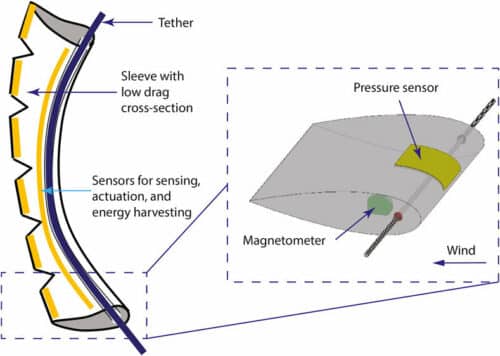Researchers have invented and successfully tested a more effective wind sensor that can be used on drones or autonomous aircraft

According to Leon Headings, co-author of the paper and senior research associate in mechanical and aerospace engineering at Ohio State, the instrument was made from “smart materials”, or matter with regulated qualities that allow it to feel and respond to its environment. The group employed polyvinylidene fluoride, an electrical polymer (PVDF). PVDF, which is widely used in architectural coatings and lithium-ion batteries, has the potential to be piezoelectric, which implies that it can generate electrical energy in response to pressure. The device can be powered by this energy. A flexible PVDF film’s recorded voltage or capacitance change can be used to determine the wind speed
The anemometers are wind sensors that are used to track the direction and speed of the wind. Better wind sensors are required as demand for autonomous aircraft grows to let these aircraft perceive weather changes and carry out safer takeoffs and landings. According to Marcelo Dapino, co-author of the study and professor of mechanical and aerospace engineering at The Ohio State University, such improvements could enhance how people use their local airspace, whether it be through drones delivering packages or passengers day traveling on unmanned aircraft.
“Our ability to use the airspace to move or efficiently transport things has huge societal implications,” said Dapino. “But to operate these flying objects, precise wind measurements must be available in real-time whether the vehicle is manned or unmanned.
Scientists created a two-part experiment to see how their technology would perform when exposed to the atmosphere of Earth. To start, the pressure sensor’s sensitivity was evaluated in a sealed container. The sensor was integrated into an airfoil and evaluated in a wind tunnel. The findings demonstrated that the sensor is incredibly accurate in measuring both pressure and wind speed. By determining the airfoil’s absolute orientation about the Earth’s magnetic field, a tiny digital magnetometer compass built inside the airfoil delivers exact wind direction data.
“Besides helping aerial objects cross long distances, accurate wind measurements are also important for energy forecasting and optimizing the performance of wind turbines, he said. “These are very advanced materials and they can be used in many applications,” said Dapino. “We would like to build on those applications to bring compact wind energy generation to the home.”
Click here for the published research paper






